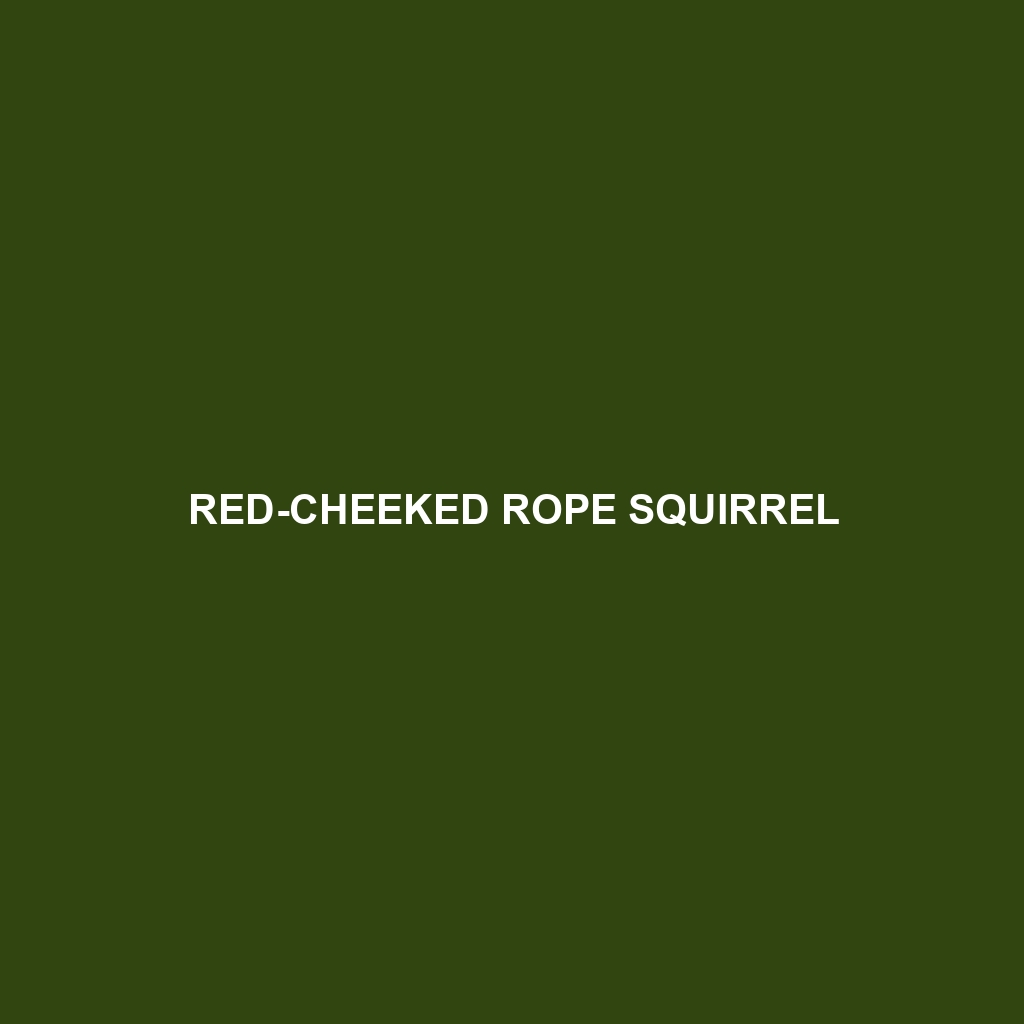Red-cheeked Rope Squirrel
Common Name: Red-cheeked Rope Squirrel
Scientific Name:
Habitat
The Red-cheeked Rope Squirrel is primarily found in the tropical rainforests and savannahs of West and Central Africa. This species thrives in regions like Cameroon, Nigeria, and the Democratic Republic of the Congo, where dense foliage and rich biodiversity provide the perfect environment for their lifestyle.
Physical Characteristics
This medium-sized rodent measures approximately 25 to 30 centimeters in length, excluding its long, bushy tail. The Red-cheeked Rope Squirrel is characterized by its distinct reddish fur on the cheeks, which contrasts sharply with its brownish-grey body. Their large eyes are designed for excellent vision in low-light conditions, and their sharp claws aid in climbing and foraging within their arboreal habitat.
Behavior
Red-cheeked Rope Squirrels are primarily diurnal, active during the day while they are foraging for food or exploring their environment. They are known for their social behavior, often found in small groups, which aids in communication and predator avoidance. Their agility and climbing skills are particularly noted, as they are rarely found on the ground, preferring to navigate through the trees.
Diet
The diet of the Red-cheeked Rope Squirrel predominantly consists of fruits, seeds, nuts, and leaves. They play an essential role in seed dispersal, which contributes to the health of their ecosystem. Their foraging habits also include grazing on flowers and fungi, making them important members of the forest understory.
Reproduction
Breeding typically occurs twice a year, with mating seasons coinciding with periods of abundant food availability. After a gestation period of around 45 days, females give birth to litters of 2-5 offspring. The young are born blind and helpless, relying heavily on their mothers during the early weeks of life. Weaning occurs around eight weeks, and juvenile squirrels begin to explore independently shortly thereafter.
Conservation Status
The Red-cheeked Rope Squirrel is currently classified as vulnerable due to habitat loss caused by deforestation and human encroachment. Conservation efforts are crucial to preserving their natural habitat and ensuring the future of this unique species.
Interesting Facts
One fascinating aspect of the Red-cheeked Rope Squirrel is its vocal communication. They produce a range of sounds to alert their group of potential dangers. Additionally, their remarkable agility allows them to perform impressive leaps between branches, which is a sight to behold in their native habitats.
Role in Ecosystem
The Red-cheeked Rope Squirrel plays a critical role in its ecosystem by acting as a seed disperser, contributing to the growth of various plant species. Their interactions with other wildlife create a balanced habitat, fostering biodiversity in the forest environments they inhabit.
